Upgrade High Frequency Inductors For The SDA SRS 1.2TL

DarqueKnight
Posts: 6,765
Introduction
I achieved very good results replacing the SDA circuit inductor and low frequency inductors of my SDA SRS 1.2TL's with Solen perfect lay inductors. Those modifications are discussed in the threads listed in the reference section below. Unfortunately, Solen does not make inductors with wire size and DCR values equivalent to those in the 1.2TL's high frequency circuit. Forum member RickTfromAZ suggested Jantzen perfect lay inductors might be suitable. The required values for the HF circuit were two 0.4 mH 22 AWG inductors (0.68 ohm DCR) and one 0.7 mH 25 AWG inductor (1.69 ohms DCR). Solen makes a 0.4 mH 22 AWG inductor (0.64 ohm DCR). Solen does not make a 0.7 mH 25 AWG inductor. In place of the original 0.7 mH inductor, I tried a Jantzen 0.65 mH 26 AWG, which did not work, then a Jantzen 0.75 mH 26 AWG which did work after it was unwound to 0.7 mH.
The Jantzen 0.4 mH 22 AWG and unwound 0.7 mH 26 AWG inductors provided a more detail, particularly with vocals, than the original 0.4 mH 22 AWG inductors. The Jantzen 0.65 mH 26 AWG inductors were not appropriate substitutes for the 0.7 mH 25 AWG original inductors. There were detrimental bass effects: loss of weight, detail, and articulation. Tactile sensation was also diminished. Vocals and solo instruments in the center also appeared to move backward a couple of feet. The 0.7 mH inductor is in series with tweeter number 4 (4th from the top), which is the next to "main" tweeter number 3. Therefore changes in that tweeter's circuit branch would be the most sonically obvious with increasing frequency.
The Solen inductors sounded better than the original inductors right from the beginning and got better with time. The Jantzen inductors produced harsh highs and smeared bass upon first listening. The sound significantly improved after five hours of play time. All detrimental artifacts were gone after an additional 12 hours of music play. I could not find a specified break in time for the Jantzen inductors. I did not bother to ask them since, unlike Solen, they do not appear to like to communicate directly with customers. Solen recommends a break in time of 100 hours for their perfect lay inductors. I did not condition the Jantzen inductors on the Cable Cooker as I did the Solens. I didn't feel like going through the numerous removal and install iterations.
These were special order items from Parts Express. The 0.4 mH inductors cost $2.86 each. The 0.75 mH inductors cost $1.89 each. Lead time is typically eight weeks. I received the 0.4 mH and 0.65 mH coils in 2.5 weeks because Parts Express included my order as part of a large order from Jantzen. The second order for the 0.75 mH inductors took seven weeks for delivery. Bev Ruggiero handled my order and she was a pleasure to work with.
Fun With FedEx
Two things in life are certain:
1. A watched pot will never boil.
2. A long awaited package will be
A. delayed,
B. misrouted,
C. misdelivered,
D. lost or,
E. all of the above.
Imagine my surprise after checking the FedEx tracking website and finding that my inductors had been delivered at the expected time of day...but not to me. When I called FedEx to find out where the package had been delivered, I was given the delivery address, which the agent admitted did not match the ship to address. My package was delivered to another address on the same street. The agent said she would have the driver redeliver the package, but I declined as it was just down the street and I could easily pick it up in 10 minutes. This was preferable to waiting another day for the driver to deliver it to yet another wrong address on a different street. The next day, another FedEx agent left a voice mail informing me that they were in the process of retrieving my misdelivered package and they would have it to me within two days. I really didn't want to call the agent back and tell her my merchandise was already in my possession...but I did it anyway because I'm trying to get to Heaven. The agent was profusely appreciative of my efforts as her FedEx colleague had noted that the package had been misdelivered, but had not noted that I was going to pick it up myself.
Perfect Lay vs. Bobbin Wound Inductors
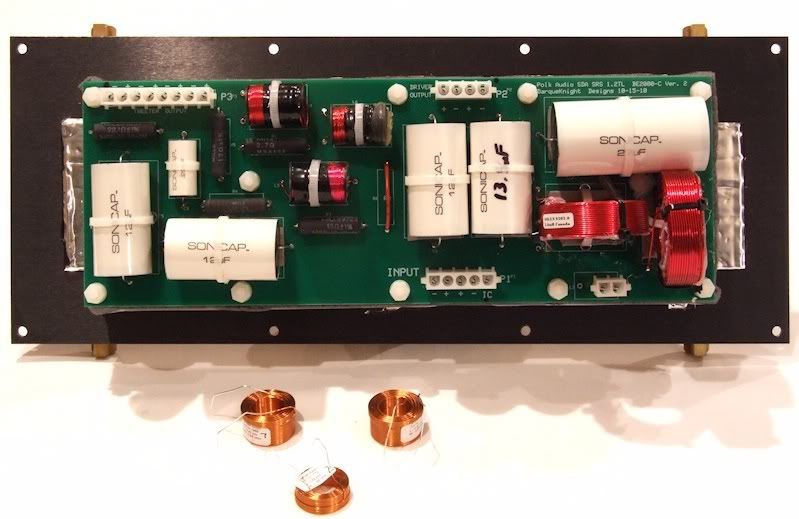
Figure 1. The three bobbin wound inductors on the left center of the crossover circuit board were replaced
with Jantzen perfect lay inductors. These were the last three legacy components left from the original
crossover boards.
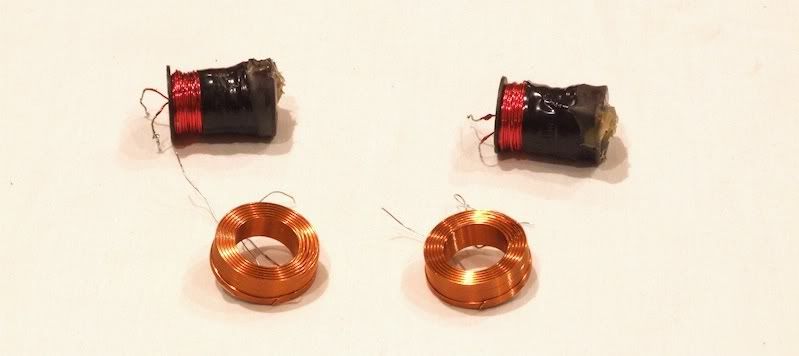
Figure 2. Bobbin wound original 0.7 mH inductors at top, 0.7 mH perfect lay replacements below.
Bobbin wound inductors are susceptible to microphonics (electrical noise introduced by mechanical vibration). Perfect lay inductors significantly reduce the effects of mechanical vibration by tightly winding and bonding the wire coils.
Jantzen 0.75 mH Inductor Unwinding
Jantzen's product options for the original 0.7 mH 25 AWG inductor were a 0.65 mH 26 AWG and a 0.75 mH 26 AWG. I was reluctant to order the larger value and unwind due to concern about compromising the mechanical integrity of the coil. After receiving the 0.65 mH coils, and noting their failure in listening tests, I saw that the wire could be carefully peeled off the coil without destabilizing the binding.
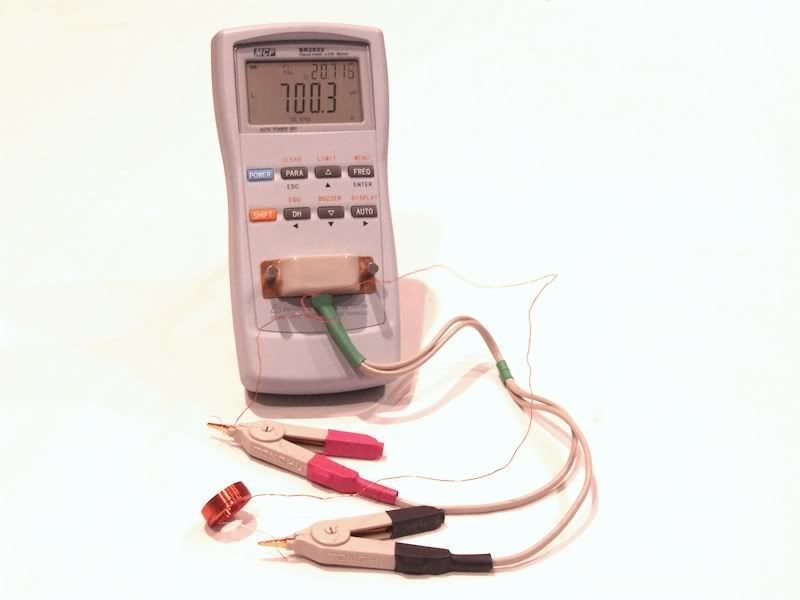
Figure 3. The SDA shrine is a nice place to unwind.
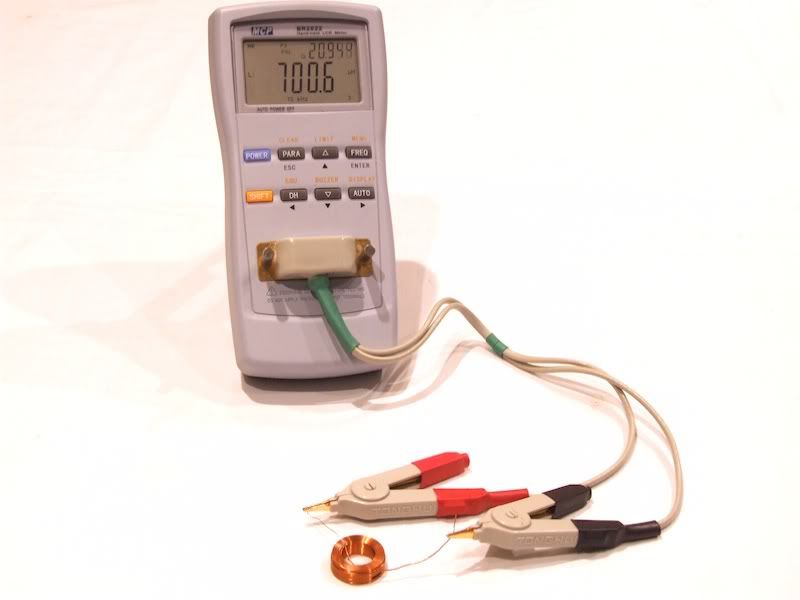
Figure 4. Unwound inductor ready for installation.
Unwinding inductors is not something I recommend without accurate devices for measuring inductance and direct current resistance (DCR). An MCP BR2822 LCR meter was used to measure inductance and a Fluke 8050A multimeter was used to measure DCR. The first inductor measured 0.756 mH with 1.84 ohms DCR. Twenty-four inches of wire was removed to reduce the inductance to 0.7 mH and 1.75 ohms DCR. The second inductor measured 0.750 mH with 1.78 ohms DCR. Twenty-two and three-quarter inches of wire was removed to reduce the inductance to 0.7 mH and 1.72 ohms DCR. Nominal values for inductance and DCR were 0.75 mH and 1.81 ohms.
A 26 AWG wire has a resistance of 0.0034 ohms per inch, at an ambient temperature of 20 degrees C (68 degrees F). The temperature in my work area was 72 degrees F, but I will use the 0.0034 ohms per inch figure for illustrative purposes. For the first inductor, 24 inches of wire removed equates to:
24 inches x 0.0034 ohms/inch = 0.0816 ohms of resistance lost.
1.84 ohms - 0.0816 ohms = 1.76 ohms. The multimeter measured 1.75 ohms DCR after cutting.
For the second inductor, 22.75 inches of wire removed equates to:
22.75 inches x 0.0034 ohms/inch = 0.07735 ohms of resistance lost.
1.78 ohms - 0.07735 ohms = 1.70 ohms. The multimeter measured 1.72 ohms DCR after cutting.
After cutting, I was faced with the tedious task of removing the orange polyamide insulation. For larger, stiffer wire, I would just grind off the insulation with a Dremel sanding wheel. For delicate, hair-thin (0.016" diameter) 26 gauge wire, I carefully scraped off the insulation with a sharp new box cutter razor blade. The wire end was laid on the back of a metal baking sheet. The process was complicated due to the small size of the wire and the fact that the brownish-orange insulation color was close to the color of the copper wire. I used an 8X magnifying lens to check my progress after each scrape. If you want to try this unwinding exercise and you aren't experienced in this sort of thing, you might want to order several more inductors than you need...just in case.
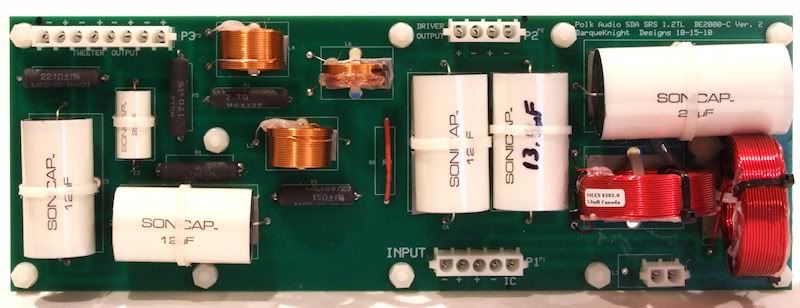
Figure 5. Custom SDA SRS 1.2TL crossover circuit board with high quality close tolerance parts. No wonder
you produce Such Good Sound.
I achieved very good results replacing the SDA circuit inductor and low frequency inductors of my SDA SRS 1.2TL's with Solen perfect lay inductors. Those modifications are discussed in the threads listed in the reference section below. Unfortunately, Solen does not make inductors with wire size and DCR values equivalent to those in the 1.2TL's high frequency circuit. Forum member RickTfromAZ suggested Jantzen perfect lay inductors might be suitable. The required values for the HF circuit were two 0.4 mH 22 AWG inductors (0.68 ohm DCR) and one 0.7 mH 25 AWG inductor (1.69 ohms DCR). Solen makes a 0.4 mH 22 AWG inductor (0.64 ohm DCR). Solen does not make a 0.7 mH 25 AWG inductor. In place of the original 0.7 mH inductor, I tried a Jantzen 0.65 mH 26 AWG, which did not work, then a Jantzen 0.75 mH 26 AWG which did work after it was unwound to 0.7 mH.
The Jantzen 0.4 mH 22 AWG and unwound 0.7 mH 26 AWG inductors provided a more detail, particularly with vocals, than the original 0.4 mH 22 AWG inductors. The Jantzen 0.65 mH 26 AWG inductors were not appropriate substitutes for the 0.7 mH 25 AWG original inductors. There were detrimental bass effects: loss of weight, detail, and articulation. Tactile sensation was also diminished. Vocals and solo instruments in the center also appeared to move backward a couple of feet. The 0.7 mH inductor is in series with tweeter number 4 (4th from the top), which is the next to "main" tweeter number 3. Therefore changes in that tweeter's circuit branch would be the most sonically obvious with increasing frequency.
The Solen inductors sounded better than the original inductors right from the beginning and got better with time. The Jantzen inductors produced harsh highs and smeared bass upon first listening. The sound significantly improved after five hours of play time. All detrimental artifacts were gone after an additional 12 hours of music play. I could not find a specified break in time for the Jantzen inductors. I did not bother to ask them since, unlike Solen, they do not appear to like to communicate directly with customers. Solen recommends a break in time of 100 hours for their perfect lay inductors. I did not condition the Jantzen inductors on the Cable Cooker as I did the Solens. I didn't feel like going through the numerous removal and install iterations.
These were special order items from Parts Express. The 0.4 mH inductors cost $2.86 each. The 0.75 mH inductors cost $1.89 each. Lead time is typically eight weeks. I received the 0.4 mH and 0.65 mH coils in 2.5 weeks because Parts Express included my order as part of a large order from Jantzen. The second order for the 0.75 mH inductors took seven weeks for delivery. Bev Ruggiero handled my order and she was a pleasure to work with.
Fun With FedEx
Two things in life are certain:
1. A watched pot will never boil.
2. A long awaited package will be
A. delayed,
B. misrouted,
C. misdelivered,
D. lost or,
E. all of the above.
Imagine my surprise after checking the FedEx tracking website and finding that my inductors had been delivered at the expected time of day...but not to me. When I called FedEx to find out where the package had been delivered, I was given the delivery address, which the agent admitted did not match the ship to address. My package was delivered to another address on the same street. The agent said she would have the driver redeliver the package, but I declined as it was just down the street and I could easily pick it up in 10 minutes. This was preferable to waiting another day for the driver to deliver it to yet another wrong address on a different street. The next day, another FedEx agent left a voice mail informing me that they were in the process of retrieving my misdelivered package and they would have it to me within two days. I really didn't want to call the agent back and tell her my merchandise was already in my possession...but I did it anyway because I'm trying to get to Heaven. The agent was profusely appreciative of my efforts as her FedEx colleague had noted that the package had been misdelivered, but had not noted that I was going to pick it up myself.
Perfect Lay vs. Bobbin Wound Inductors

Figure 1. The three bobbin wound inductors on the left center of the crossover circuit board were replaced
with Jantzen perfect lay inductors. These were the last three legacy components left from the original
crossover boards.
Table 1
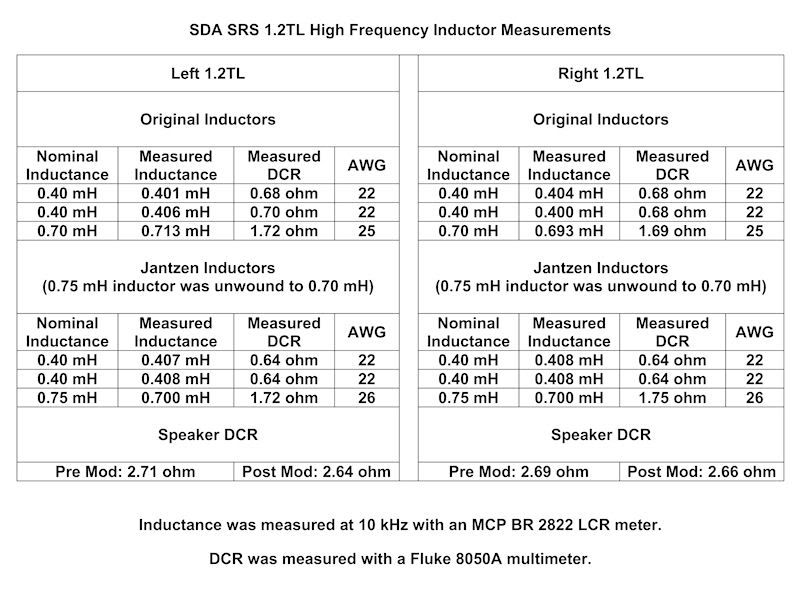


Figure 2. Bobbin wound original 0.7 mH inductors at top, 0.7 mH perfect lay replacements below.
Bobbin wound inductors are susceptible to microphonics (electrical noise introduced by mechanical vibration). Perfect lay inductors significantly reduce the effects of mechanical vibration by tightly winding and bonding the wire coils.
Jantzen 0.75 mH Inductor Unwinding
Jantzen's product options for the original 0.7 mH 25 AWG inductor were a 0.65 mH 26 AWG and a 0.75 mH 26 AWG. I was reluctant to order the larger value and unwind due to concern about compromising the mechanical integrity of the coil. After receiving the 0.65 mH coils, and noting their failure in listening tests, I saw that the wire could be carefully peeled off the coil without destabilizing the binding.

Figure 3. The SDA shrine is a nice place to unwind.

Figure 4. Unwound inductor ready for installation.
Unwinding inductors is not something I recommend without accurate devices for measuring inductance and direct current resistance (DCR). An MCP BR2822 LCR meter was used to measure inductance and a Fluke 8050A multimeter was used to measure DCR. The first inductor measured 0.756 mH with 1.84 ohms DCR. Twenty-four inches of wire was removed to reduce the inductance to 0.7 mH and 1.75 ohms DCR. The second inductor measured 0.750 mH with 1.78 ohms DCR. Twenty-two and three-quarter inches of wire was removed to reduce the inductance to 0.7 mH and 1.72 ohms DCR. Nominal values for inductance and DCR were 0.75 mH and 1.81 ohms.
A 26 AWG wire has a resistance of 0.0034 ohms per inch, at an ambient temperature of 20 degrees C (68 degrees F). The temperature in my work area was 72 degrees F, but I will use the 0.0034 ohms per inch figure for illustrative purposes. For the first inductor, 24 inches of wire removed equates to:
24 inches x 0.0034 ohms/inch = 0.0816 ohms of resistance lost.
1.84 ohms - 0.0816 ohms = 1.76 ohms. The multimeter measured 1.75 ohms DCR after cutting.
For the second inductor, 22.75 inches of wire removed equates to:
22.75 inches x 0.0034 ohms/inch = 0.07735 ohms of resistance lost.
1.78 ohms - 0.07735 ohms = 1.70 ohms. The multimeter measured 1.72 ohms DCR after cutting.
After cutting, I was faced with the tedious task of removing the orange polyamide insulation. For larger, stiffer wire, I would just grind off the insulation with a Dremel sanding wheel. For delicate, hair-thin (0.016" diameter) 26 gauge wire, I carefully scraped off the insulation with a sharp new box cutter razor blade. The wire end was laid on the back of a metal baking sheet. The process was complicated due to the small size of the wire and the fact that the brownish-orange insulation color was close to the color of the copper wire. I used an 8X magnifying lens to check my progress after each scrape. If you want to try this unwinding exercise and you aren't experienced in this sort of thing, you might want to order several more inductors than you need...just in case.

Figure 5. Custom SDA SRS 1.2TL crossover circuit board with high quality close tolerance parts. No wonder
you produce Such Good Sound.
Proud and loyal citizen of the Digital Domain and Solid State Country!
Post edited by DarqueKnight on
Comments
-
Acoustic Response Measurements
Room response measurements were made with Dayton Audio's OmniMic system. It is easier to see differences in the harmonic distortion and bass decay plots if they are saved to your computer and viewed in succession.
Figure 6. Room response with original high frequency inductors and Jantzen replacements.
The frequency response was very similar with both sets of high frequency inductors. Most of the differences in overall frequency response were 0.5 dB or less. Notable exceptions were the Jantzen inductors being 1.6 dB higher at 2.6 kHz, 1 dB higher at 3.5 kHz and 0.8 dB higher at 256 Hz.
The color coded lines in the harmonic distortion plots (figs. 7 and 8) represent the following:
Black - frequency response.
Dark blue - sum of 2nd-5th harmonics.
Red - 2nd harmonic.
Purple - 3rd harmonic.
Green - 4th harmonic.
Light blue - 5th harmonic.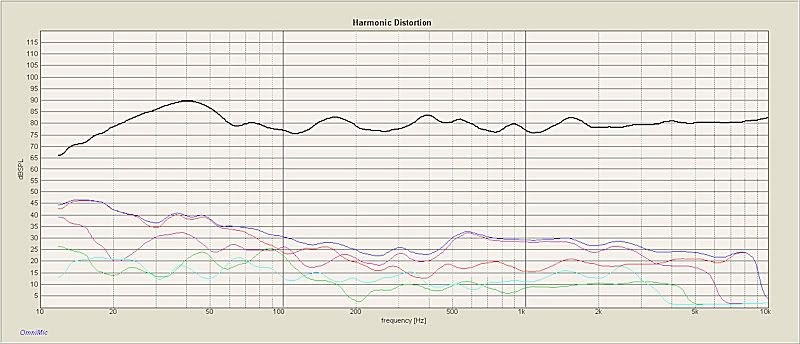
Figure 7. Harmonic distortion with original high frequency inductors.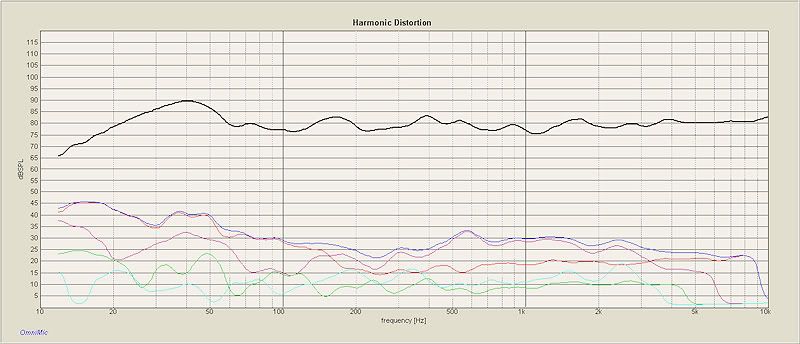
Figure 8. Harmonic distortion with Jantzen high frequency inductors.
It may be counter intuitive to think that a component upgrade in the tweeter circuit would improve bass response, but everything on a single crossover circuit board is interconnected. A change in the flow and quality of energy in one part of the circuit will affect the flow and quality of energy in another part. While the distortion products are more linear above 500 Hz with the Jantzen inductors, the distortion products, particularly the dissonant 3rd and 5th harmonics, are significantly reduced below 150 Hz.
Bass decay plots show how long it takes the sound to decay at each frequency. The ideal situation is flat response which means that some bass notes do not last much longer than others. Significant differences in decay times can cause a decrease in bass definition. A general smoothing and flattening of bass decay times is seen with the Jantzen inductors, particularly below 65 Hz.
Figure 9. Bass decay with original high frequency inductors.
Figure 10. Bass decay with Jantzen high frequency inductors.
Summary of Sound Improvements
1. Improved overall clarity and detail, particularly in dense, complex orchestral and choral pieces.
2. More low level detail as evidenced by hearing more as a song is fading out and by turning the volume way down.
3. More bass articulation and micro-growls.
4. More ambient information (echoes and reflections).
5. Increased rhythm, pace and liquidity of rapid music passages.
6. Apparently louder sound due to lowered noise floor.
7. Increased image weight.
8. There were no changes in image localization or sound stage dimensions.
9. There were no changes in tactile sensation.
1-7 above can be heard when listening from an adjoining room.
Addendum - CRS+ Modifications
I wanted to replace the original HF and LF inductors in my three pairs of CRS+'s with perfect lay inductors, but Solen could not accommodate me. Jantzen had the required 0.4 mH 22 AWG, 1.25 mH 20 AWG and 2.5 mH 20 AWG inductors.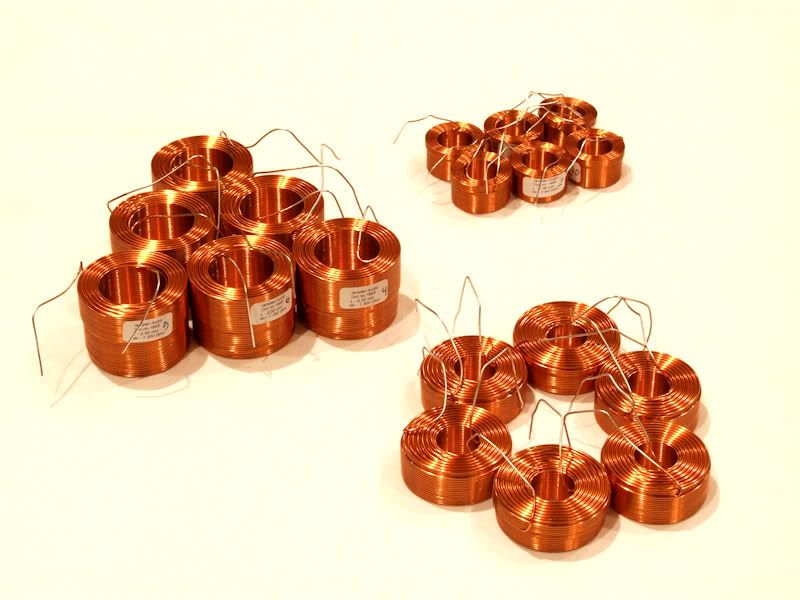
Figure 11. Such good coils.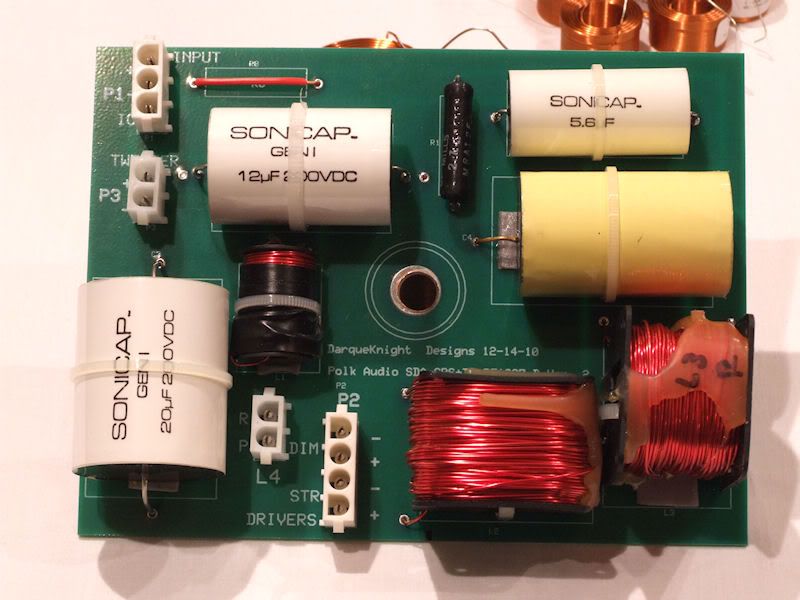
Figure 12. Custom CRS+ crossover board with original inductors.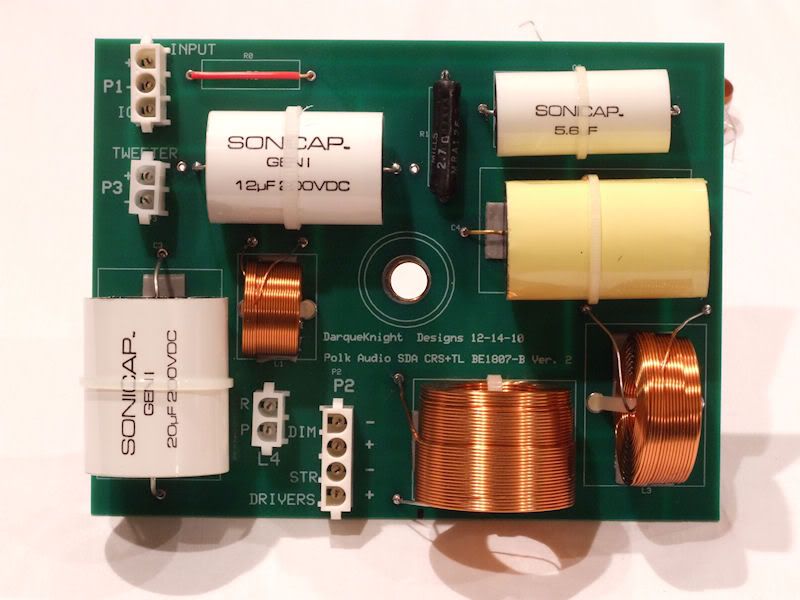
Figure 13. Custom CRS+ crossover board with Jantzen inductors.
Figure 14. After 23 years of faithful service, the Class of '89 goes into retirement.
References
1. Upgrade Low Frequency Inductors For The SDA SRS1.2TL
2. Custom Printed Circuit Board And SDA Inductor For The SDA 1.2TL-Preliminary Results
3. Improvements To Modified SDA SRS 1.2TL Crossover - Post #57Proud and loyal citizen of the Digital Domain and Solid State Country! -
Wow - another giant step forward for owners of SDA's. Wish I could find published DCR for inductors in the 2.3TL's, I'd be on this mod like a fat kid on a piece of cake."Science is suppose to explain observations not dismiss them as impossible" - Norm on AA; 2.3TL's w/sonicaps/mills/jantzen inductors, Gimpod's boards, Lg Solen SDA inductors, RD-0198's, MW's dynamatted, Armaflex speaker gaskets, H-nuts, brass spikes, Cardas CCGR BP's, upgraded IC Cable, Black Hole Damping Sheet strips, interior of cabinets sealed with Loctite Power Grab, AI-1 interface with 1000VA A-L transformer
-
drumminman wrote: »Wish I could find published DCR for inductors in the 2.3TL's, I'd be on this mod like a fat kid on a piece of cake.
You will have to take them out and measure them, or have someone else measure them. There may be an electronics supply store near you that has a meter sensitive enough for DCR measurements.Proud and loyal citizen of the Digital Domain and Solid State Country! -
Thanks to DK, I suspect that Parts Express will notice an increase in sales from Polk Audio members.
Thank you DK for showing us the way!!!Statistics show that 98% of us will die at some point in our lifetime.
The other 2% will work for WalMart. -
anonymouse wrote: »DQ - what do you do for a career? Your attention to detail is staggering.
http://www.polkaudio.com/forums/member.php?18511-DarqueKnightProud and loyal citizen of the Digital Domain and Solid State Country! -
DK -
With the improvements you noticed to the highs with the new Jantzen Perfect Lay inductors that you installed on the crossover board, will you try changing binding posts to see if further improvement would be realized?
PM1Statistics show that 98% of us will die at some point in our lifetime.
The other 2% will work for WalMart. -
PolkMaster1 wrote: »DK -
With the improvements you noticed to the highs with the new Jantzen Perfect Lay inductors that you installed on the crossover board, will you try changing binding posts to see if further improvement would be realized?
I hadn't planned to. I have Cardas CCGR posts now. What would you recommend as an upgrade?
So far, I have not been able to hear a difference in binding posts, although others have proved they can. Proud and loyal citizen of the Digital Domain and Solid State Country!
Proud and loyal citizen of the Digital Domain and Solid State Country! -
DK -
I thought you had the original binding posts. I would have recommended the Cardas CCGR - just as you have - or the Vampire BP/Hex-CB. Yeah - I am one of those who hears differences in binding posts.
So why do you use a single pair of binding posts instead of bi-wiring with dual sets of binding posts?Statistics show that 98% of us will die at some point in our lifetime.
The other 2% will work for WalMart. -
I have Vampire BP/Hex posts on one pair of my CRS+'s. The other two pair have Cardas CCGR. My SRS's have Cardas ACBP.
I removed the upper binding posts after I soldered the HF crossover wires to the bottom posts. I am not interested in running a bi-wired configuration.Proud and loyal citizen of the Digital Domain and Solid State Country! -
Ray do you have the part #'s to order these? You know I am interested in this... LOL..
-
Ray do you have the part #'s to order these? You know I am interested in this... LOL..
For the 1.2TL:
0.40 mH, 22 AWG, Part No. 1489, $2.86
0.75 mH, 26 AWG, Part No. 1160, $1.89
For the CRS+ (1989 version)
0.40 mH, 22 AWG, Part No. 1489, $2.86
1.25 mH, 20 AWG, Part No. 1137, $5.63
2.50 mH, 20 AWG, Part No. 1695, $8.61Proud and loyal citizen of the Digital Domain and Solid State Country! -
For those of you who are interested in taking on this project, I would recommend that you invest in a dedicated LCR Meter to get the best results when it comes to measuring inductors and capacitors. Dedicated LCR Meters cost more than a good DMM, but they are worth it.
There are plenty of good ones on the market, such as what DK mentioned - Fluke (pretty pricy), B&K, and Algient Technologies.
DK - I dont believe that is a Fluke meter you have pictured above. I am going to take a wild guess here. Could that be an MCP BR2822 LCR Meter?
:cheesygrin: :cheesygrin: Statistics show that 98% of us will die at some point in our lifetime.
:cheesygrin: Statistics show that 98% of us will die at some point in our lifetime.
The other 2% will work for WalMart. -
drumminman wrote: »Wow - another giant step forward for owners of SDA's. Wish I could find published DCR for inductors in the 2.3TL's, I'd be on this mod like a fat kid on a piece of cake.
If you measure them or have them measured, I would be very interested in the results.
Taken from a recent Audioholics reply regarding "Club Polk" and Polk speakers:
"I'm yet to hear a Polk speaker that merits more than a sentence and 60 seconds discussion."
My response is: If you need 60 seconds to respond in one sentence, you probably should't be evaluating Polk speakers.....
"Green leaves reveal the heart spoken Khatru"- Jon Anderson
"Have A Little Faith! And Everything You'll Face, Will Jump From Out Right On Into Place! Yeah! Take A Little Time! And Everything You'll Find, Will Move From Gloom Right On Into Shine!"- Arthur Lee -
Any idea what the price range of these meters go for?PolkMaster1 wrote: »For those of you who are interested in taking on this project, I would recommend that you invest in a dedicated LCR Meter to get the best results when it comes to measuring inductors and capacitors. Dedicated LCR Meters cost more than a good DMM, but they are worth it.
There are plenty of good ones on the market, such as what DK mentioned - Fluke (pretty pricy), B&K, and Algient Technologies.
DK - I dont believe that is a Fluke meter you have pictured above. I am going to take a wild guess here. Could that be an MCP BR2822 LCR Meter?
:cheesygrin: :cheesygrin:Mcintosh MC-501 mono blocks
:cheesygrin:Mcintosh MC-501 mono blocks
Mcintosh C-45
Mcintosh MVP-871
PS AUDIO AV5000
MIT 3.3 Shotgun biwire speaker interface
MIT 3.3 Shotgun XLR interconnects
Polk 2.3TL's Gimpod boards/F-1 modded crossovers/dynamat/JB weld/Larry's rings/Blackhole 5 strips
Polk 3.1 TL's mint/stock (purchased new)
Polk SDA-2's -
LCR meters are on eBay from $25 to $300 and more. The low-priced ones are all Chinese. BK Precision (at least some of the older models) are Taiwanese. Not sure of this one--been watching it for months but can't seem to pull the trigger.
http://www.ebay.com/itm/260843975696?ssPageName=STRK:MEWAX:IT&_trksid=p3984.m1423.l2649 -
The LCR Meters from B&K Precission, ExTech, Promax, Aligent Technologies, etc., can start at over $250 and up. These meters not just measure the inductance, capacitance, or resistance of these components, they have advanced features that would not be found in a $100 LCR meter. Some examples include:
They can take measurements of impdence, theta, and ESR. These meters can also take measurements of your components using test frequencies of 100Hz, 120Hz, 1KHz, and 10kHz. The $500 range of LCR meters can also perform test frequencies of 100kHz. Most of us probably would not use these features, but you would feel safe at night knowing you have a high-calliber, LCR meter by your side. The LCR meter worked wonders for me when I had to measure components that did not have their ratings on it (inductors come to mind). I have no idea how I would be able to tell an unlabeled 1mH inductor from an unlabled 2mH inductor without any type of instrumentation.
Some of these LCR meters also claim to measure LCR components that is connected in series or in parallel. I have not used my LCR meter in this manner.
There are other meters that are available at $100 or less, but I am not certian of their accuracy of measuring component values, nor do they have the advanced features that are mentioned above.
Fluke meters always command a higher price over the competition.Statistics show that 98% of us will die at some point in our lifetime.
The other 2% will work for WalMart. -
Go for it Shurkey!!! Its a very nice looking meter with great features. If not, I would recommend the B&K 879B.Statistics show that 98% of us will die at some point in our lifetime.
The other 2% will work for WalMart. -
Thanks Ray!!
-
PolkMaster1 wrote: »For those of you who are interested in taking on this project, I would recommend that you invest in a dedicated LCR Meter to get the best results when it comes to measuring inductors and capacitors. Dedicated LCR Meters cost more than a good DMM, but they are worth it.
There are plenty of good ones on the market, such as what DK mentioned - Fluke (pretty pricy), B&K, and Algient Technologies.
DK - I dont believe that is a Fluke meter you have pictured above. I am going to take a wild guess here. Could that be an MCP BR2822 LCR Meter?
:cheesygrin: :cheesygrin:
:cheesygrin:
How about something like this?
http://www.amazon.com/Sinometer-30-Range-Digital-Multimeter-VC9808/dp/B000KA9KTM/ref=sr_1_13?s=hi&ie=UTF8&qid=1336862104&sr=1-13 -
You are better off going with a discrete LCR meter than to go with an all-in-one DMM/LCR meter.Statistics show that 98% of us will die at some point in our lifetime.
The other 2% will work for WalMart. -
Extremely limited capacitance functions. Only goes to 20uF. Seems to be the usual problem with cheap meters. -
I see the 879B allows you to calculate ESR :cool:
-
I am about to order some of these inductors from Parts Express. This may need to be started in another thread.
If anyone has interest, please let me know and I will add you to the list.
I would need the following:
Jantzen Part Number and quantity you are interested in.
I would let you know what Parts Express says, its costs, and the turnaround time - although DK pretty much covered this information regarding part number cost - thank you much DarqueKnight!!!
Once I have all of the information gathered from the forum members and Parts Express, I can formalize costs.Statistics show that 98% of us will die at some point in our lifetime.
The other 2% will work for WalMart. -
DarqueKnight wrote: »For the 1.2TL:
0.40 mH, 22 AWG, Part No. 1489, $2.86
0.75 mH, 26 AWG, Part No. 1160, $1.89
For the CRS+ (1989 version)
0.40 mH, 22 AWG, Part No. 1489, $2.86
1.25 mH, 20 AWG, Part No. 1137, $5.63
2.50 mH, 20 AWG, Part No. 1695, $8.61
Ordered mine today, Bev said 2-3 weeks for delivery- Cheap enough upgrade not to try them IMO!! Ordered the ones for my CRS+ as well thought about doing the 1C's but I'm still undecided on selling them or not I have 2 guys wanting them pretty bad and it's been awhile since they have seen any play time..
Thanks again Ray!! -
I am curious has anyone used Alpha Core Inductors? According to Sonic Craft they are something like a gift from the Audio Gods. Not as cheap as the Parts Express parts but not too bad either.
http://www.soniccraft.com/products/inductors/alphacore_inductors.htmRadio Station W7ITC -
I looked into foil inductors from ERSE; the DCR is going to be way low due to the larger equivalent gauge size of the material.
12, 14, and 16 gauge equivalent. Nothing in 18 or smaller.
http://www.erseaudio.com/Products/FoilQCoils
First Guess: Sourced from the same supplier. -
Received my inductors today!!
-
Received mine today and installed a set into my left speaker. The other set will go into the right speaker tomorrow or next week. All original Polk inductors are retired.
WHOO HOO !!!!Statistics show that 98% of us will die at some point in our lifetime.
The other 2% will work for WalMart. -
Well I officially don't have any stock parts in my crossovers. I just finished installing the inductors and fired up my system, I won't give my thoughts on this upgrade just yet as I would like to spend some time playing a few of my favorite songs and also give them some time to settle in..
Thanks Ray for doing the leg work and letting us follow behind as it is a lot of fun to tweak and hear some improvements.. -
Summary of Sound Improvements
1. Improved overall clarity and detail, particularly in dense, complex orchestral and choral pieces.
2. More low level detail as evidenced by hearing more as a song is fading out and by turning the volume way down.
3. More bass articulation and micro-growls.
4. More ambient information (echoes and reflections).
5. Increased rhythm, pace and liquidity of rapid music passages.
6. Apparently louder sound due to lowered noise floor.
7. Increased image weight.
8. There were no changes in image localization or sound stage dimensions.
9. There were no changes in tactile sensation.
Number 3 and 4 is so dead on, it's almost being there live, the echoes and reflections are so live it's unreal, and the what you call micro growls helps the bass at lower volumes that I love when I can't turn up the volume when I want to (you know having a wife and kid at home).
Ray you really have a love for this and I am greatful for the work you put forth to Such Good Sound!!
If you can't find the values and can find some that you can unwind or get someone to unwind its worth it, for what they cost it's a must IMO!! And if they are going to get better with time then I can't wait.
What Ray said is dead on what they do..



